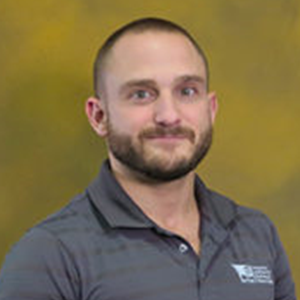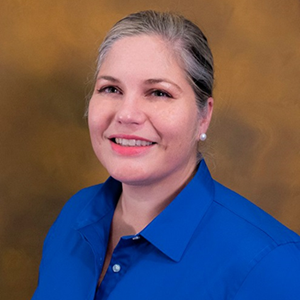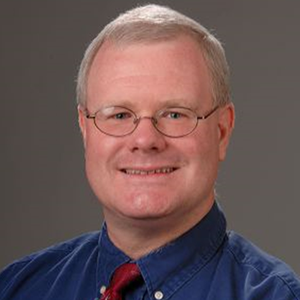
PREVENT AVOIDABLE DAMAGE—RESILIENT CONSTRUCTION THROUGH IBHS FORTIFIED PROGRAM WEBINAR
ON-DEMAND PRESENTATION | CONTINUING EDUCATION: 1.5 PDHs
DESCRIPTION
Building codes are a minimum standard for life safety and do not guarantee property protection or continued building functionality during, or after, severe weather events. This session introduces FORTIFIED, a program of the Insurance Institute for Business & Home Safety (IBHS). FORTIFIED is a set of superior construction standards to make new or existing residential and commercial buildings stronger against severe weather like hurricanes, severe thunderstorms, straight-line winds and hailstorms. The FORTIFIED program enhances the most vulnerable systems of a building to ensure a stronger building, while making communities more resilient by helping them thrive and businesses to reopen quicker after a significant weather event.
There are three levels for the FORTIFIED Home and Commercial program—Roof, Silver and Gold. FORTIFIED Roof focuses on strengthening the roof, the first line of defense from severe weather.
Silver addresses the strength of the building envelope. Designers must consider the additional threat of wind-borne debris and protect windows with a minimum impact rating. Wall systems must be impact rated or protected by a qualified impact-rated system according to prescribed wind speeds. For commercial properties, enhanced continuity of electrical utilities for critical systems is addressed.
Gold focuses on the performance of structural systems. It requires continuous load path be verified from the roof to the ground and resist both uplift and lateral loads. For commercial properties, backup power is also mandatory to minimize the downtime a business will endure.
The key takeaway points from this session are:
- Attendees will learn about IBHS’s real-world impact to help prevent avoidable damage.
- Attendees will learn what the FORTIFIED program is and how it works.
- Attendees will learn who can benefit from FORTIFIED and its value to these audiences.
- Attendees will learn specifically how FORTIFIED impacts an entire community.
- Attendees will learn how FORTIFIED buildings are more resilient than others.
WEBINAR MATERIALS
The day before the webinar, participants will have access to electronic versions of the following:
WHO SHOULD ATTEND?
This webinar is for architects, engineers, building officials and contractors.
FORMAT
Web-based seminar using "Go To Meeting" technology.
WEBINAR DURATION
1+ hour of lecture, followed by discussion and questions. (1.5 hours total)
ABOUT THE PRESENTERS
Christopher Cioffi, EIT
Insurance Institute for Business and Home Safety
Christopher Cioffi, EIT is a Commercial Lines Engineer with the Insurance Institute for Business & Home Safety (IBHS). He has worked extensively over the last four years to help develop and manage FORTIFIED Commercial. He helped develop the stronger, more resilient, commercial design standards for hurricane-prone and high wind-prone structures. He also consults with the IBHS Research Center team to help develop and organize commercial structural testing and collaborates with the business protection unit to provide membership-focused resources.
Christopher has an extensive background in BIM management, architectural and structural design for commercial buildings. Prior to his work at IBHS, Christopher conducted structural analysis of steel, concrete, engineered wood and masonry structures; used structural analysis programs to model design and convey structural stability; and visited construction sites to analyze existing structures, monitor current construction, and determine if additional services were needed.
Christopher has a Bachelor of Architectural Engineering degree with a concentration in Structural Engineering and a minor in Architecture Studies from the Pennsylvania State University.
Julie Lowrey, P.E.
Insurance Institute for Business and Home Safety
Julie Lowrey, P.E. is the Director of Engineering for the IBHS FORTIFIED Program. Her team works to help translate top-tier research into action to help prevent avoidable suffering, strengthen homes and businesses, inform the insurance industry and support thriving communities. Julie’s previous professional cold-formed steel-related experience includes engineering consulting and design for Zabik Turner Engineering, and cold-formed steel truss engineering and design for Alpine TrusSteel. Julie has been involved with the Cold-Formed Steel Engineers Institute (CFSEI) since 2005. She is the Immediate Past Chair (2019-2020) for CFSEI, has authored two CFSEI Tech Notes, and currently serves on the CFSEI Executive Committee. She is a registered Professional Engineer in the state of Florida and has a bachelor’s degree in Mechanical Engineering from the University of Florida.
J. Arn Womble, PhD, P.E.
Insurance Institute for Business and Home Safety
Dr. Womble is a lead research engineer with the IBHS Research Center in South Carolina. He is a graduate of the wind engineering programs at Colorado State University and Texas Tech University, and he has examined the effects of high winds on structures since 1989. His consulting engineering background includes structural design, wind-tunnel testing of structures, and failure analysis. He worked extensively in engineering expert witness investigations for wind/water damage causation studies in the unprecedented insurance litigation following Hurricane Katrina. His research activities emphasize the use of remote-sensing technologies for visual and automated wind damage assessment. He is a recipient of the National Science Foundation CAREER Award targeting the forensic investigation of tornado-damaged structures using remote-sensing technologies, and he currently chairs the Remote Sensing Subcommittee of the ASCE Standards Committee for Tornado Wind Speed Estimation. Prior to joining IBHS in 2018, he served on the engineering faculty at West Texas A&M University, where he was founder and director of the Wind Hazards Remote Sensing Laboratory. He also worked in private practice as founder and president of WindForce Associates, Inc. and as a project manager for CPP, Inc. Wind Engineering Consultants, where he directed wind-tunnel studies for determination of structural and cladding loads.
|